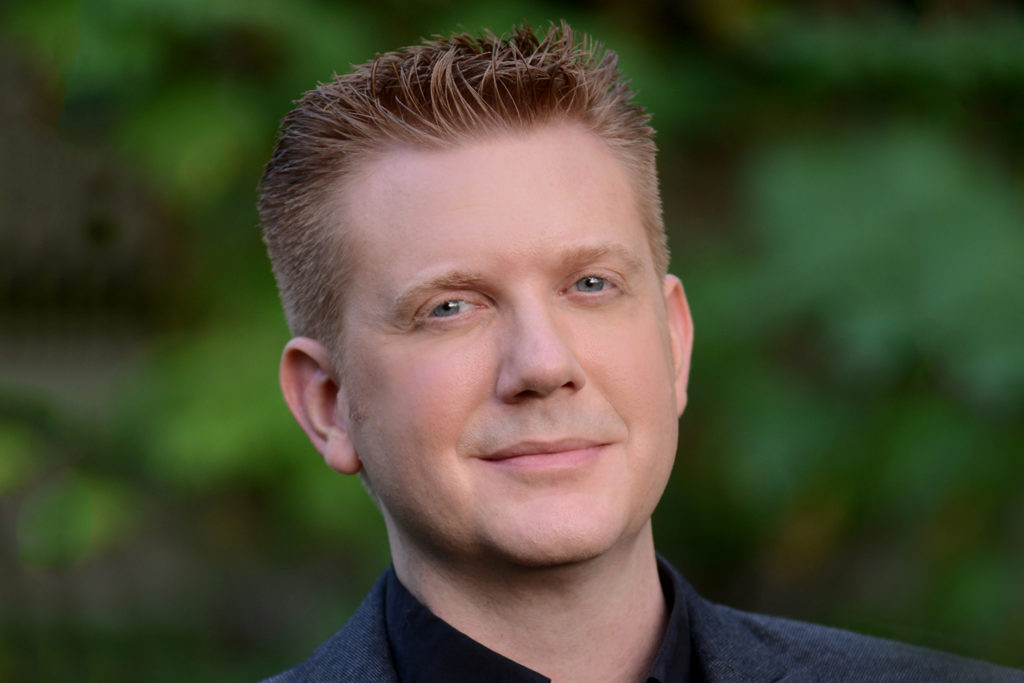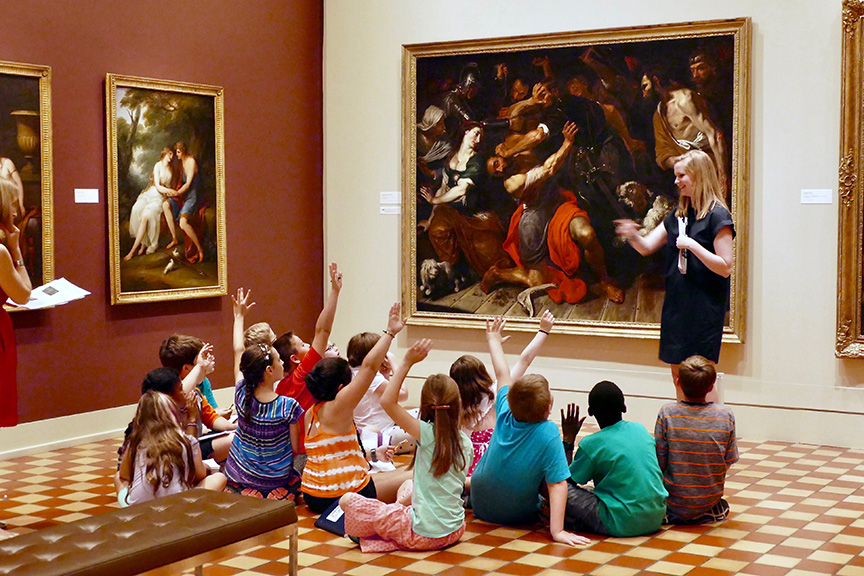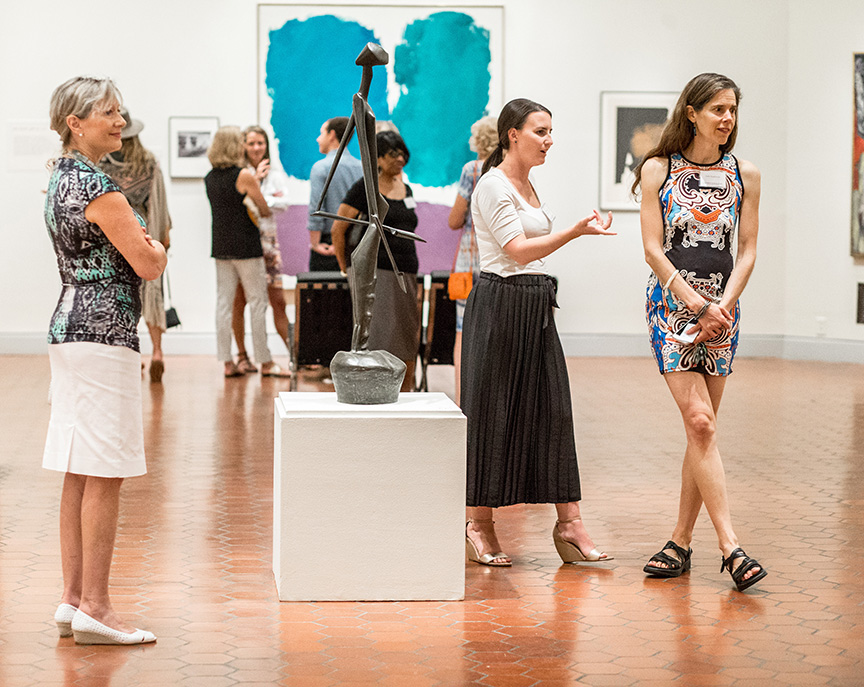People
How I Got My Art Job: The Museum Director Whose Secret Weapon Is… Being a Classically Trained Opera Singer
Matthew McLendon says that his classical training in belting our arias "has informed everything I've done in my life."

Matthew McLendon says that his classical training in belting our arias "has informed everything I've done in my life."

Sarah Cascone

From fabricators to mummy conservators to private collection managers, the art world is full of fascinating jobs you may not have realized even existed. In artnet News’s column “My I Got My Art Job,” we delve into these enviable art-world occupations, asking insiders to share their career path and advice for others who wish to follow in their footsteps.
This week, we spoke with Matthew McLendon, director and chief curator of the Fralin Museum of Art at the University of Virginia in Charlottesville, Virginia.
Education: I planned to be an opera singer, so I studied voice intensively. I ended up doing two bachelor’s degrees, my music degree and an art history degree, both at Florida State University. When it came to the second degree, I knew I didn’t want to spend another two full years in Tallahassee, so I went to their study abroad program in London, interning at what was then the Tate Gallery. I never wanted to leave London, so I got a PhD from the Courtauld Institute of Art there.
How I got the job I have now: I was at the John and Mable Ringling Museum of Art, in Sarasota, Florida, where I was hired in 2010 to restart their contemporary program. I was there for just shy of seven years. I had a remarkable run of exhibitions and projects there and was able to build a program that spoke to my background.
I was contacted by the recruiter for this job at the Fralin. I’ve always been very dedicated and interested in the mission of the academic museum, and it seemed like a great opportunity for me.
On stepping up to the top job: I spoke to other friends who had made the transition from curator to director, and they just kept telling me, “You just won’t believe how busy you are.” I thought, “I don’t know, I’m running this big program at the Ringling…” They were right. It is a shock to the system—a whole different level of work and engagement.
When you’re a curator, often you have days or even weeks or months to mull over your decisions. As the director, you have a steady stream of people in and out of your office all day who need decisions at that moment.

Visitors at the Fralin Museum of Art. Photo courtesy of the Fralin Museum of Art.
My most influential mentor: I’ve had so many! Luanne McKinnon, director at the Cornell Fine Arts Museum at Rollins College in Florida, just outside of Orlando, where I first worked after finishing my PhD, has been and continues to be a mentor in every way.
I think about my primary voice teachers—Janice Harsanyi and Yvonne Ciannella—every day, even though I don’t sing at all anymore. The lessons they taught me stay with me: the importance of beauty in the world, and striving for aesthetic perfection—knowing you’re never going to attain it.
On trading music for art: I was able to study voice with truly remarkable people, and meet some of the great opera singers in the world. Ultimately, I started so young that I kind of burned out.
Fortunately, I had spent a summer studying abroad in Florence, Italy, and for fun took the survey course on Italian Renaissance art. If you can take that course in Florence, it’s pretty spectacular, no matter who’s teaching it. I didn’t want to sing anymore, but I knew I wanted to stay in the arts, and it was that experience that I fell back on.

Visitors at the Fralin Museum of Art. Photo courtesy of the Fralin Museum of Art.
What I actually do all day: When people look at museum professionals, they think we spend all our time in galleries, or we’re in storage roaming through racks of paintings and looking at beautiful objects all day. That is part of the job, but the more day-to-day is pretty mundane. I spend a lot of time out of the office at social events, lunches, and meetings. Hopefully, some time at the computer to catch up on email, and in the evening another function or dinner of some kind.
The best part of my job: It might sound a little sentimental, but it’s the interaction with our audiences, and seeing how having a direct experience with an object or work of art can really change visitors’ perception of reality and the world they inhabit. It’s just as amazing in one of our five-year-olds as it is in someone who’s 85.
Most memorable project: It’s hard to narrow it down to one, because it’s always whatever project you’re working on right now. My last major project at the Ringling, “Toni Dove: Embodied Machines,” is opening in February. Toni is one of the true pioneers of interactive installation and live mixed performance, and this will be the first museum survey of her work.
The other I would say is Jill Sigman’s The Hut Project, part of the Ringling’s 2015 “Re:Purposed” exhibition. She’s gone all over the world and worked with different communities, using their trash to create incredible structures that she calls huts. They become centers for performance and community conversations about what it means to be a culture of constant commodification, a throwaway culture.

Jill Sigman, Hut #10 (2015) in “Re:Purposed.” Courtesy of the John and Mable Ringling Museum of Art.
Advice for those who want my job: A diversity of experiences is really helpful, both in general and within the museum world. I’ve been asked before if I regret spending all that time as a musician. Of course not. It has informed everything I’ve done in my life.
One thing I wish I could tell my 22-year-old self: You do not have to have it all figured out, and you do not have to believe in five-year plans or 10-year plans. It should be a journey. Travel more. You will never have as much time to travel as you do when you’re 22.